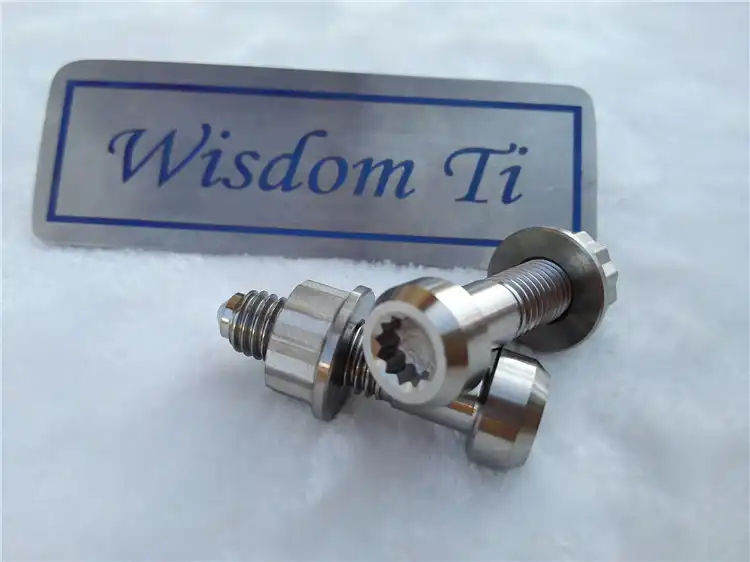
As an expert in the auto business, I frequently wind up digging into the subtleties of different parts that make up vehicles. One such part that has grabbed my eye is the M7 split rim bolts. These bolts assume a significant part in the development and support of parted edge wheels, which are ordinarily utilized in substantial applications like trucks and transports. In this article, I aim to provide a comprehensive comparison of M7 split rim bolts, examining their design, performance, and applications.
Design Features of M7 Split Rim Bolts
The plan of it is a basic figure their exhibition and dependability. Not at all like conventional one-piece bolts, split edge bolts comprise of two separate pieces that are combined to frame a safe association. The M7 assignment alludes to the measurement string size of the bolt, which is 7 millimeters in distance across. This size is normally utilized in auto applications because of its solidarity and similarity with standard hardware.
One of the key design features of it is their construction from high-strength materials such as titanium or alloy steel. These materials offer superior durability and resistance to corrosion, ensuring that the bolts can withstand the demanding conditions encountered in heavy-duty environments. Additionally, M7 split rim bolts are often precision-engineered to meet tight tolerances, resulting in a snug fit that minimizes the risk of loosening or failure.
In terms of construction, M7 split rim bolts typically consist of a threaded shank and a separate head that is secured in place by a locking mechanism. This two-piece design allows for easier installation and maintenance compared to one-piece bolts, as the head can be removed independently for access to the wheel components. Furthermore, M7 split rim bolts may feature specialized coatings or treatments to enhance their performance, such as zinc plating for added corrosion resistance.
Performance Characteristics of M7 Split Rim Bolts
When it comes to performance, M7 split rim bolts excel in several key areas compared to traditional one-piece bolts. One notable advantage is their ability to provide a more secure and reliable connection between wheel components. The two-piece design of M7 split rim bolts allows for greater clamping force, which helps to prevent loosening or shearing under heavy loads. This enhanced stability is essential for ensuring the safety and integrity of split rim wheels in high-stress environments.
Furthermore, they are often engineered to meet stringent quality standards, such as ISO 9001 certification. This ensures that the bolts are manufactured to consistently high levels of precision and reliability, meeting the needs of demanding applications. Additionally, M7 split rim bolts may undergo rigorous testing procedures, including tensile and fatigue testing, to verify their strength and durability under real-world conditions.
Another performance characteristic of M7 split rim bolts is their compatibility with a wide range of wheel configurations and vehicle types. These bolts are available in various lengths, thread pitches, and head styles to accommodate different wheel designs and mounting requirements. Whether used in commercial trucks, agricultural machinery, or industrial equipment, M7 split rim bolts offer versatility and reliability across diverse applications.
Applications of M7 Split Rim Bolts
The adaptability and performance prowess of them render them exceptionally versatile for a broad spectrum of applications within the automotive and transportation sectors. Among their primary uses is in the construction and upkeep of split rim wheels, which serve as integral components in heavy-duty vehicles like trucks, buses, and trailers. M7 split rim bolts offer a steadfast and dependable fastening solution for these wheels, ensuring their steadfastness and reliability even when subjected to the most arduous conditions.
Beyond their application in split rim wheels, M7 split rim bolts find utility in various other automotive constituents, including brake systems, suspension systems, and chassis components. Their robust construction and precise engineering render them ideal for demanding tasks where safety and dependability are of utmost importance. Moreover, these bolts are not confined solely to automotive realms but also find deployment across industrial and manufacturing domains. Here, they play a pivotal role in securing machinery and equipment, thereby facilitating seamless operational workflows.
The versatility and performance capabilities of them make them indispensable across a multitude of applications in both automotive and industrial settings. Their reliability and steadfastness underpin their widespread adoption, ensuring optimal performance and safety across diverse operational landscapes.
One of the key advantages of M7 split rim bolts is their ability to deliver unparalleled performance and reliability. This ensures not only the safety of operations but also the efficiency and productivity of vehicles and machinery utilizing these bolts.
Conclusion
In conclusion, they offer a combination of robust design, high-performance characteristics, and versatile applications, making them an ideal choice for professionals seeking reliable fastening solutions in automotive and transportation applications. Whether in heavy-duty trucks, industrial machinery, or other demanding environments, the product excel in delivering unmatched performance and ensuring safe and efficient operation.
If you want to know more about M7 split rim bolts, please contact us: sales@wisdomtitanium.com.
References
- SAE International. (2018). SAE J2332: Split Rim Wheels - Study Methodology.
- ASTM International. (2020). ASTM F2282: Standard Specification for Quality Assurance Requirements for Carbon and Alloy Steel Wire, Rods, and Bars for Mechanical Fasteners.
- National Highway Traffic Safety Administration. (2009). Commercial Vehicle Safety Alliance (CVSA) Roadside Inspection. Retrieved from https://www.cvsa.org/inspections/inspections/
- International Organization for Standardization. (2015). ISO 9001:2015 - Quality management systems - Requirements. Retrieved from https://www.iso.org/standard/62085.html





